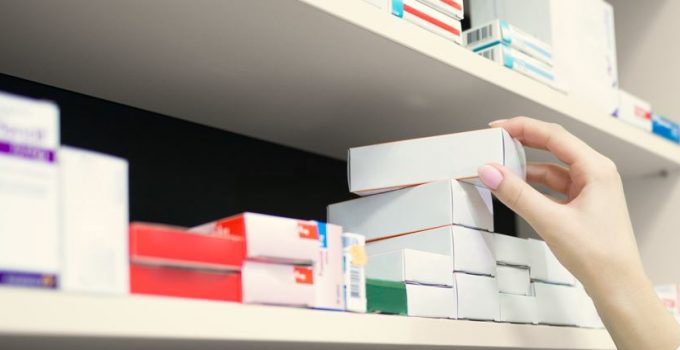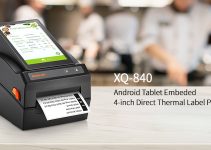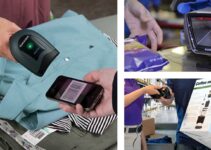Maximizing patient safety and improving the quality of care is the ultimate goal for healthcare providers and extends to the hospital pharmacy. Doing so requires staying within regulatory compliance, while also advancing staff retention and meeting fiscal constraints. Barcode technologies provide a “virtual voice” to patients, applications and workflows. Barcoding accomplishes this by laying a solid foundation for enhancing patient identification, providing visibility into medical practices, and driving efficiencies throughout healthcare applications — and is a key component in the electronic medical record (EMR) adoption
The Path To Reducing Medication Errors – SUPPLYING THE RIGHT MEDICATION TO THE RIGHT PATIENT IN THE RIGHT DOSE IS FUNDAMENTAL FOR ENSURING PATIENT SAFETY
One of the most proven and effective methods to prevent medical errors is to use barcoding to identify medications at the unit-dose level for dispensing and administration. Pharmacists can lay a strong foundation for patient safety initiatives by ensuring all medications used in the hospital include a barcode. This practice aligns their organization with patient safety goals established by The Joint Commission and the American Society of Health-System Pharmacists (ASHP)
The FDA investigated barcode medication administration processes and concluded they would reduce medication errors by 50 percent. This study led the agency to require pharmaceutical manufacturers to apply barcodes at the unit-of-use packaging level by April 2006. Recommendations by the ASHP encourage hospitals to build on the foundation of barcoded medications advocated by the FDA. The ASHP Health-System Pharmacy 2015 Initiative requires that 75 percent of hospitals use machine-readable coding to verify medications before dispensing.
The initiative also sets a goal that 75 percent of medications be automatically recorded prior to administration. The Joint Commission National Patient Safety Goals for 2011 require labeling for all medications and medication containers. Pharmacists can lead barcode-based patient safety initiatives by developing a comprehensive program that ensures all forms of medication are barcoded at the unit-dose level, implementing pharmacy labeling and scanning processes to prove the effectiveness of barcode control, and encouraging the implementation of automated medication administration systems
ACCURATE INFORMATION WITH ONE BARCODE SCAN
Hospitals have several options for implementing barcode marking, including both manual and automated repackaging, overwrapping, and other on-demand barcode printing. On-demand thermal printing is a highly effective way for hospitals to establish the foundation of their in-house barcode labeling program. Thermal barcode printers support all pharmaceutical formats and data options and excel at producing high-quality symbols suitable for vials, syringes, ampules, IV bags, tablets, and other medication forms. Thermal printers also provide strong total cost-of-ownership (TCO) advantages and afford easy integration with legacy pharmacy IT systems.
MEDICATION DISPENSING
Pharmacists most commonly take advantage
of barcode processes to verify and record medication dispensing. Typically, the
pharmacist scans the unit-of-use barcode on each dose dispensed to fill a
prescription. The National Drug Control (NDC) number is encoded in the barcode
and is automatically recorded when the symbol is scanned. The NDC is an
FDA-standard 10-digit identification number that identifies the item by labeler
(manufacturer, repackager or distributor), product code (which defines the
product by strength, dosage form and formulation), and package type.
The scanner connects to a database or other software application that checks
the NDC against the prescription order to validate that the correct medication
and dosage were dispensed. An immediate alert triggers if there is a
discrepancy. Lot codes and expiration dates are also commonly encoded on
unit-of-use labels and can be used to trigger appropriate alerts. Most barcode
systems also automatically record the date and time of all transactions to
provide a detailed audit trail.
The pharmacist may also print a unit-dose label with the information included as human-readable text and in a barcode, and scan it to record the release of the prescription. The nurse or aide who receives the dose may also scan the barcode on his or her ID badge to record custody.
AND ENSURING THE FIVE RIGHTS OF MEDICATION ADMINISTRATION
The same barcodes used for automated dispensing also drive bedside medication administration applications, which are at the heart of positive patient ID safety programs. In automated medication administration, barcode scanning enables a computerized Five Rights to check — providing the patient a virtual voice. The process is similar to dispensing verification but can prevent many more errors. Prior to administering medication at the bedside, the nurse or aide scans the barcodes on his or her own ID badge, the patient wristband, and the medication-specific unit-dose label. Application software on a handheld or cart-mounted computer quickly performs a database check to confirm the dispensed medication conforms to the patient’s order.
BARCODE LABELING REQUIREMENTS
Decisions about which medications to barcode first, what information to include, and which symbology to use are easy to navigate once the overriding project goals are established. The goals determine the required processes, which pharmaceuticals need barcodes, information to encode in the symbols, and symbology selection. The pharmacy or purchasing department should also contact suppliers to learn their unit-of-use barcode packaging plans, and then create a list of pharmaceuticals requiring self-labeling to satisfy program goals.
ASHP states that the ultimate goal should be to barcode every drug in the pharmacy. Maximizing patient safety requires a complete automated bedside medication administration workflow as described above. This point-of-care solution requires that all medications contain barcodes at the unit-dose level.
SELECTING BARCODE PRINTERS
The desired symbology, label sizes, and printing volume drive printer selection and the best types of label media to use. Before evaluating specific printers, organizations should make a fundamental decision whether to use laser or thermal print technology. Thermal printers are built specifically for barcoding, while lasers offer familiarity because they are used in many pharmacies and offices. Be sure to consider how each technology supports unit-dose labels.
Variable data performance — If lot codes and expiration dates are included in the barcode symbol, the printer must process variable data efficiently. Variable data output slows some printers, while others process variable data at their top print speeds.
High resolution — Readable barcodes require sharp, clear edges, and as symbols get smaller, the need for high resolution becomes more stringent. Pay particular attention to edge definition, which refers to the clarity and contrast of the dark and light edges within the symbol.
Symbology support — Some print technologies can only output symbologies commonly used for retail packaging. RSS support can be especially hard to find. Another factor to consider is the effort required to modify existing equipment to support desired symbologies.
Printer supply flexibility — Unit-dose labeling often means using multiple label sizes and materials designed to withstand cold storage, moisture, curved objects and other challenges. The printer must produce sharp barcodes on these materials without wasting media, jamming or hampering hospital staff productivity
BARCODES AND THE PHARMACY — WORKING TOGETHER FOR PATIENT SAFETY
Barcode control systems for medication dispensing and administration deliver proven and significant safety benefits and can be developed independently of larger and more expensive CPOE and EMR programs. Pharmacists are well-positioned to drive barcode-based patient safety initiatives and to reap immediate benefits from unit-dose labeling. If healthcare centers and pharmacies add computerized patient management systems later, barcoding applications afford easy integration to support the new systems. Selecting barcode equipment that supports leading clinical information systems and networking standards enables scalability that supports future growth.
Barcode printing solutions from ZEBRA can help healthcare organizations reduce errors and increase productivity. Now is the time to provide your patients, medications and assets with a virtual voice — so you can work with the patient and continue to provide safe treatments and a caring atmosphere.



